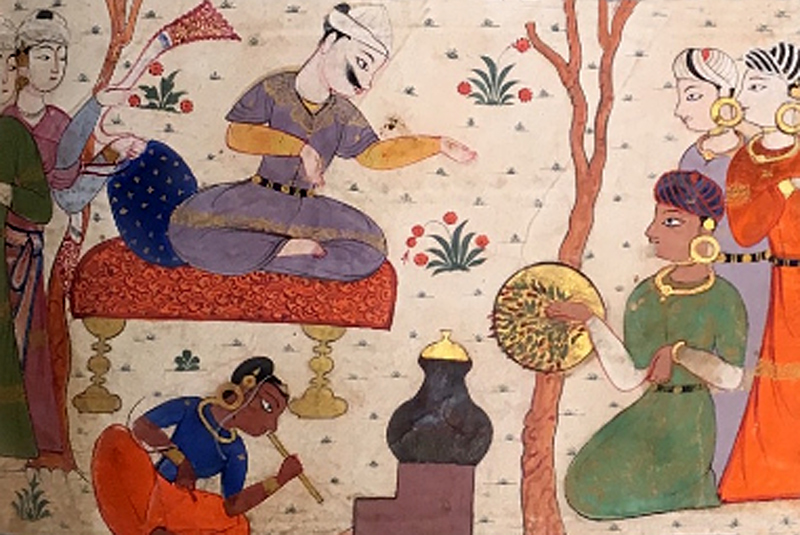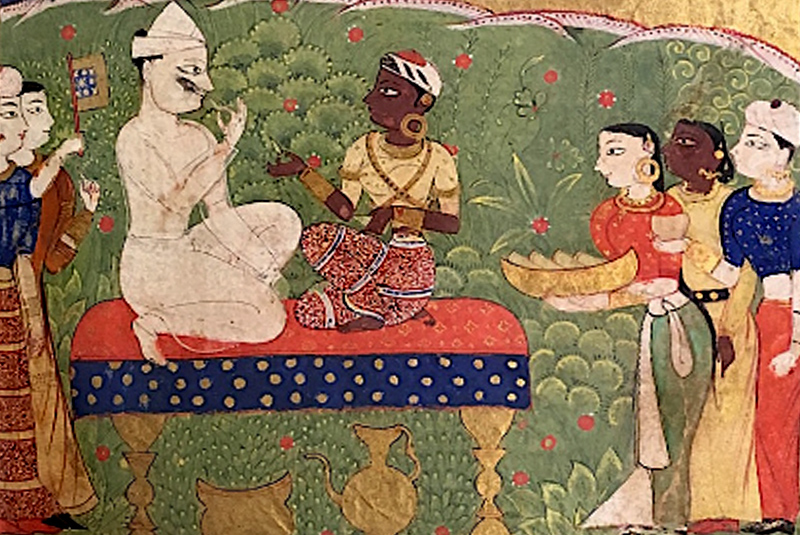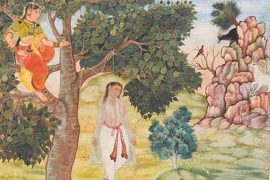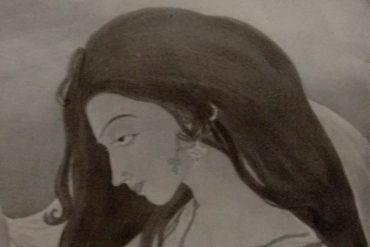Mix together well-cooked mince with the same amount of minced onion and chopped dried ginger, a quarter of those, and half a tūlcha [a measure] of ground garlic and having ground three tūlchas of saffron in rosewater, mix it with the mince together with aubergine pulp. Stuff the samosas and fry (them) in ghee. Whether made from thin course flour bread or from fine flour bread or from uncooked dough, any of the three (can be used) for cooking samosas, they are delicious.
This Samosa recipe is taken from Niʻmatnāmah-i Nāṣirshāhī or ‘Book of Delights’, a 15th-century cookbook from the Mughal court. It gives a glimpse into the delightful journey of the Samosa through the ages.
Written between 1495 and 1505, the ‘Book of Delights’ was made for the Sultan of Malwa, Ghiyas al-Din Khilji. A warrior-turned-foodie, Sultan Ghiyas gave up his sword after 34 years of fighting. His son could fight his battles from then on – the Sultan wanted to eat and be merry!

Ghiyas al-Din watches the process of cooking green vegetables (Image: British Library/ Public Domain)
Copyright©Madras Courier, All Rights Reserved. You may share using our article tools. Please don't cut articles from madrascourier.com and redistribute by email, post to the web, mobile phone or social media.Please send in your feed back and comments to editor@madrascourier.com











